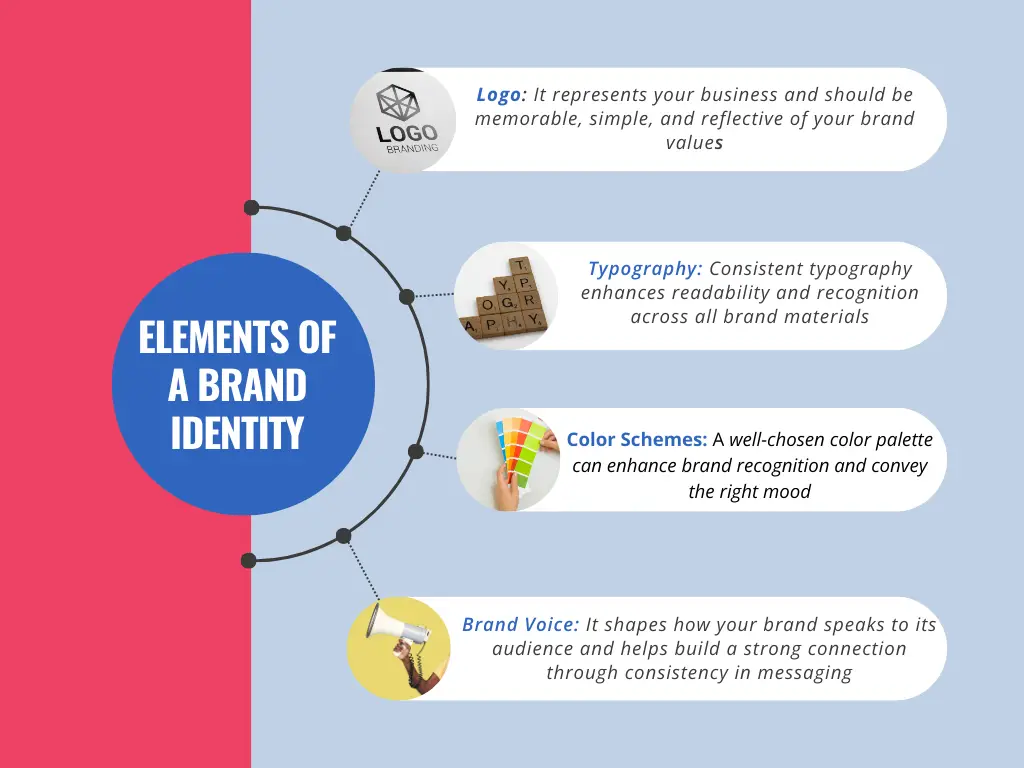Branding is more than just a logo or a catchy slogan—it’s the essence of what your business represents and how it connects with your audience. A strong brand identity not only sets you apart in a crowded market but also establishes credibility and builds trust with your customers. In today’s competitive landscape, understanding and effectively implementing your brand purpose can be the key to sustained business success.
What is a Brand’s Purpose?
It’s what drives your actions, decisions, and the impact you wish to make in the world. A strong brand purpose can differentiate your business from competitors and connect you with like-minded customers who share your values.
Successful brands are clear about what they stand for and organize their entire businesses around that clarity. Your brand purpose is your reason for getting out of bed in the morning. This motivation varies from person to person and brand to brand, but the essence remains the same: a brand purpose provides direction and meaning.
Why is Brand Purpose Important?
Understanding and articulating your brand’s purpose is crucial because it:
- Guides Decision-Making: Knowing your purpose helps steer your business decisions, keeping them aligned with your core values and mission.
- Builds Connection: People are more likely to support brands that share their beliefs and values. Your purpose creates a deeper connection with your audience, turning customers into loyal advocates.
- Inspires Action: A clear purpose motivates both your team and your customers. It’s the driving force that pushes your business forward and inspires action beyond mere transactions.
How to Develop Your Brand Purpose
Identifying and communicating your brand’s purpose using his concept called “The Golden Circle.”
The Golden Circle Explained
The Golden Circle consists of three layers:
- What: Every organization knows what they do. It’s the products or services they offer.
- How: Some organizations know how they do it. These are the things that make them different or better.
- Why: Very few organizations know why they do what they do. By “why,” we mean your purpose, cause, or belief. It’s the reason you exist beyond making a profit.
Successful organizations think, act, and communicate from the inside out, starting with “why” rather than “what.”
The Power of Starting with Why
Apple is an example of this approach. If Apple were like everyone else, their marketing might say, “We make great computers. They are beautifully designed and easy to use.” While this statement is true, it doesn’t resonate emotionally.
Instead, Apple communicates with their “why” first: “Everything we do, we believe in challenging the status quo and thinking differently.” Then, they explain how: “The way we challenge the status quo is by making our products beautifully designed, simple to use, and user-friendly.” Finally, they state what they do: “We make great computers. Want to buy one?”
This approach is powerful because “people don’t buy what you do; they buy why you do it.” Customers are drawn to Apple’s core belief in innovation and challenging norms, not just the products themselves.
Defining Your Brand Purpose: Practical Steps
- Identify Your Core Beliefs: Reflect on what drives your business beyond profit. What impact do you want to have on the world?
- Articulate Your Why: Craft a clear and compelling statement that captures your brand’s purpose. This statement should resonate with both your team and your audience.
- Align Your Actions: Ensure that every aspect of your business, from marketing to product development, reflects your brand purpose.
- Communicate Consistently: Share your purpose in every interaction—through your branding, your messaging, and the experiences you create for your customers.
Examples of Brand Purposes
- Apple: To challenge the status quo and think differently.
- Tesla: To accelerate the transition to sustainable energy.
- Nike: To bring inspiration and innovation to every athlete in the world.
- Canva: To empower the world to design.
These companies don’t just sell products; they inspire movements and drive change through their clearly defined purposes.
Your brand’s purpose is the impact you want to have on the world. Whether you’re just starting or refining your brand, it’s essential to identify and articulate this purpose. To help you get started, we’ve put together a short workbook to guide you in defining your brand’s purpose. You can download it through the link in the description or by scanning the QR code
Remember, your brand’s purpose is more than just a statement—it’s a commitment to making a difference. So, what’s your purpose?
Understanding Brand Strategy
A brand strategy is the blueprint for how your brand is communicated and perceived. It includes your mission, vision, and values, forming the foundation of your brand’s identity. Defining a clear brand strategy helps ensure that your business goals align with your audience’s expectations, creating a cohesive and memorable customer experience. Brands with well-defined strategies, like Apple or Nike, consistently meet their audience’s expectations by clearly communicating their purpose and values.
For further reading on successful brand strategies, check out this resource on the impact of brand strategy and how leading companies have utilized these elements to elevate their market presence.
Elements of a Brand Identity
Building a strong brand identity involves several key elements:
- Logo Design: Your logo is often the first impression customers have of your brand. It should be distinctive, memorable, and reflective of your brand values.
- Typography: Consistent fonts across all marketing materials help in creating a cohesive look and feel for your brand.
- Color Schemes: Colors evoke emotions and can influence how your brand is perceived. For example, blue often represents trust and professionalism, while red signifies excitement and passion.
- Brand Voice: Your brand voice should resonate with your target audience, reflecting your brand’s personality in all communications.

The Role of Consistency in Branding
Maintaining consistency across all platforms is crucial for building brand recognition and trust. Whether it’s through social media, your website, or in-store experiences, a consistent brand message reinforces who you are and what you stand for. Brands like Coca-Cola and McDonald’s excel in consistency, ensuring their customers receive the same experience regardless of the platform or location.
Consistency doesn’t just apply to visual elements—it extends to your messaging, tone, and overall customer experience. This consistency helps reinforce your brand’s promise, making it easier for customers to recognize and remember your business.
Tips for Building a Brand Identity
Here are some practical tips for startups and small businesses looking to create a cohesive brand identity:
- Start with Your Purpose: Clearly define what your brand stands for and what it aims to achieve. This will guide all other branding decisions.
- Know Your Audience: Understanding your target audience’s needs, preferences, and pain points will help you craft a brand that resonates.
- Be Authentic: Authenticity builds trust. Make sure your brand reflects genuine values and stories that your audience can connect with.
- Utilize Branding Tools: Leverage tools like Canva for designing brand assets, and tools like Adobe Color for selecting cohesive color palettes.
Conclusion
A strong brand identity and strategy are essential for business success. They not only differentiate you from competitors but also foster customer loyalty and trust. Take the time to evaluate your current branding efforts—does your brand accurately reflect your business’s mission, vision, and values? Are you consistently communicating your brand message across all platforms?
By investing in a well-defined brand purpose, you set your business up for long-term success, attracting and retaining customers who truly resonate with your brand.

